Originally posted by dana marniche:
I think we all are aware that fair-skinned people are found in Yemen where they settled as Iranians, Turks, Syrians and other people who mixed with the settled inhabitants.
![[Roll Eyes]](rolleyes.gif)
quote:
Originally posted by Clyde Winters:
Syrians (=white Arabs)
quote:
Originally posted by dana marniche:
I think we all are aware that fair-skinned people are found in Yemen where they settled as Iranians, Turks, Syrians and other people who mixed with the settled inhabitants.![[Roll Eyes]](rolleyes.gif)
quote:This is true. But where did they come from. Remember, the white Syrians or Gutians were in Mesopotamia 1000 years before the Aryans invaded India, and the People of the Sea began to invade Southern Europe and the Nile Valley..
Originally posted by the lioness,:
quote:
Originally posted by Clyde Winters:
Syrians (=white Arabs)quote:
Originally posted by dana marniche:
I think we all are aware that fair-skinned people are found in Yemen where they settled as Iranians, Turks, Syrians and other people who mixed with the settled inhabitants.![[Roll Eyes]](rolleyes.gif)




quote:--With contributions by Reuven Aharoni, Reuven Amitai, Frederic Bauden, Jonathan Berkey, Daniel Crecelius, Joseph Drory, Jane Hathaway, Robert Irwin, Donald Little, Nimrod Luz, Carl Petry, Thomas Philipp, Yossef Rapoport, André Raymond, Donald S. Richards, Warren Schultz and Hannah Taragan.
This volume consists of 19 studies by leading historians of the Mamluks. Drawing on primary Arabic sources, the studies discuss central political, military, urban, social, administrative, economic, financial and religious aspects of the Mamluk Empire that was established in 1250 by Mamluks (manumitted military slaves, mostly Turks and Circassians). It was a Sunni orthodox state that had a formidable military, a developed and sophisticated economy, a centralized Arab bureaucracy and prestigious religious and educational institutions.
There are special articles about Cairo, Damascus, Jerusalem, Safed and Acre. The last part of the volume describes the Mamluk military class that survived in Egypt (although in a transformed form) under the Ottoman suzerainty after the Empire annexed Egypt and Syria in 1517.

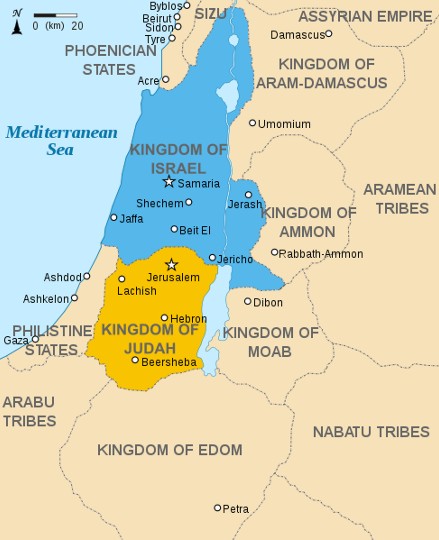



quote:Repost,
Originally posted by the lioness,:
Ebla (Arabic: إبلا, modern: تل مرديخ, Tell Mardikh), was one of the earliest kingdoms in Syria. Its remains constitute a tell located about 55 km (34 mi) southwest of Aleppo near the village of Mardikh. Ebla was an important center throughout the third millennium BC and in the first half of the second millennium BC. Its discovery proved the Levant was a center of ancient, centralized civilization equal to Egypt and Mesopotamia, and ruled out the view that the latter two were the only important centers in the Near East during the early Bronze Age. Karl Moore described the first Eblaite kingdom as the first recorded world power.[1]

Mesopotamian Bronze Relief Plaque - Origin: Ebla, Syria Circa: 1500 BC to 800 BC Collection: Near Eastern Medium:

ARCHAEOLOGICAL SITE: EBLA, SYRIA SCULPTURE 2ND-1ST MILL.BCE Two warriors embrace before a deity with horned crown and a stern face. Relief (17th BCE) from the long side of a basalt sacrificial basin. See also 08-02-02/27 From Temple N, Ebla, Syria (Middle Bronze Age) National Museum, Aleppo, Syria






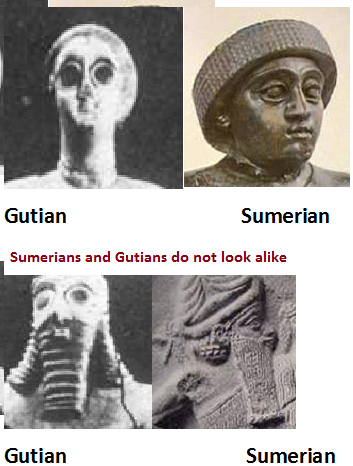

quote:He looks like a white boy, dumbass, Clyde's right
Originally posted by Mike111:
[QB] Tukuler - I couldn't help laughing:
You're quoting a priest????
An ignorant lying priest (Father Theodoros David) at that!
Then playing dumb as to who the pale people in the Levant are.
You're obviously running some kind of a con: what did lioness pull you over to the dark side?
Anyway, what the ancient Syrians looked like is no secret, here, take a gander.
_______________________________________________________________________________________
As you can see from the location of Damascus, modern Syria corresponds to the ancient Amorite kingdom of Aram.








quote:
Originally posted November 8,2013 by Troll Patrol aka Ish Gebor:
Gutium: Gutian People, Gutian Dynasty of Sumer, Gutian Language
quote:http://www.barnesandnoble.com/w/gutium-llc-books/1024980592?ean=9781158713295
Excerpt:
The Gutians (also Guteans or Guti) were a tribe that overran southern Mesopotamia when the Akkadian empire collapsed in approximately 2183 BC (short chronology). Sumerian sources portray the Gutians as a barbarous, ravenous people from Gutium or Qutium in the mountains, presumably the central Zagros. The Sumerian king list represents them as ruling over Sumer for a time, and paints a picture of chaos within the Gutian administration. Next to nothing is known about their origins, as no "Gutian" artifacts have surfaced from that time; little information is gleaned from the contemporary sources. Nothing is known of their language either, apart from those Sumerian king names, and that it was distinct from other major languages of the region (such as Akkadian, Hurrian, and Elamite). The Guti appear in Old Babylonian copies of inscriptions ascribed to Lugal-Anne-Mundu of Adab as among the nations providing his empire tribute. These inscriptions locate them between Subartu in the north, and Marhashe and Elam in the south. They were a prominent nomadic tribe who lived in the Zagros mountains in the time of the Akkadian Empire. Sargon the Great also mentions them among his subject lands, listing them between Lullubi, Armanu and Akkad to the north, and Nikku and Der to the south. The epic Cuthaean Legend of Naram-Sin of a later millennium mentions Gutium among the lands around Mesopotamia raided by Annubanini of Lulubum during Naram-Sin's reign in Akkad. As Akkadian might went into a decline, the Gutians began to practice hit-and-run tactics on Mesopotamia; they would be long gone by the time forces could arrive to deal with the situation. Their raids crippled the economy of Sumer.
quote:
Originally posted by Clyde Winters:
The Standard of Ur.
The Standard of Ur was found in PG779 one of the largest graves in the Royal Cemetery at Ur by Leonard Woolley (1920s), the excavator at Ur. It was lying in the corner of a chamber above the right shoulder of a soldier whom Woolley thought had carried it on a long pole as a standard, the royal emblem of a king: hence its common name. It is essentially a hollow wooden box measuring 8.5 inches high and 19.5 inch long, inlaid with a mosaic of shell, red limestone, and lapis lazuli set in bitumen. Its original function is not yet understood, although it is more likely to have been the sound box for a musical instrument.

The main panels are known as 'War' and 'Peace'. 'War' shows one of the earliest representations of a Sumerian army. Chariots, each pulled by four donkeys, trample enemies; infantry with cloaks carry spears; enemy soldiers are killed with axes, others are paraded naked and presented to the king who holds a spear.
The 'Peace' panel depicts animals, fish and other goods brought in procession to a banquet. Seated figures, wearing woollen fleeces or fringed skirts, drink to the accompaniment of a musician playing a lyre. Banquet scenes such as this are common on cylinder seals of the period, such as on the seal of the 'Queen' Pu-abi.
[/QB]

quote:.
Originally posted by Mike111:





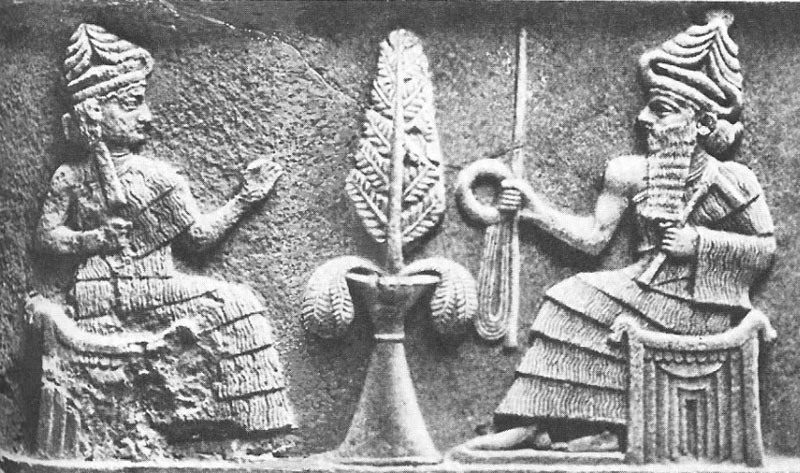

quote:Clyde Gudea looks like an Italian kid I once knew named Caesar who had a bowl hair cut.
Originally posted by Clyde Winters:
.

quote:http://ezinearticles.com/?Tracing-the-Origin-of-Ancient-Sumerians&id=311587
Tamil Dravidians, Australoids and ancient Sumerians:
Quote: "The second study concerns physical examination of Sumerian skulls. Buxton and Rice have found that of 26 Sumerian crania they examined 22 were Australoid or Austrics. Further According to Penniman who studied skulls from other Sumerian sites, the Australoid Eurafrican, Austric and Armenoid were the "racial" types associated with the Sumerians.
Here is Penniman's description of the Austric type found at Sumer: "These people are of medium stature, with complexion and hair like those of the Eurafrican, to which race they are allied with dark eyes, and oval faces, broad noses, rather feeble jaws, and slight sinewy bodies."
(The Austric Origin of the Sumerian Language, Language Form, vol. 22, no.1-2, Jan.-Dec. 1996.) http://ezinearticles.com/?Tracing-the-Origin-of-Ancient-Sumerians&id=311587
Tamil Dravidians and Australian Aborigines:
Perhaps most similar to Australian languages are the Dravidian languages of southern India. Tamil, for example, has five places of articulation in a single series of stops, paralleled by a series of nasals, and no fricatives (thus approaching the Australian proportion of sonorants to obstruents of 70% to 30%).
Approaching the question from the opposite direction: according to the latest WHO data on the prevalence of chronic otitis media (Acuin 2004:14ff), Aboriginal Australians have the highest prevalence in the world
–
10-54%, according to Coates & al (2002), up to 36% with perforations of the eardrum. They are followed
–
at some distance
–
by the Tamil of southern India (7.8%, down from previous estimates of 16-
34%), … (from
http://www.flinders.edu.au/speechpath/Manly%20final.pdf ) Dr Rao and his colleagues sequenced the mitochondrial genomes of 966 people from traditional tribes in India. They reported several of the Indian people studied had two regions of their mitochondrial DNA that were identical to those found in modern day Australian Aboriginal people. (http://s1.zetaboards.com/anthroscape/topic/2011921/1/) Also
–
http://www.biomedcentral.com/1471-2148/9/173/abstract/ Then there is the Human Genome Project and here is what that has to say: During his own journey in pursuit of the Y chromosome story in the late 1990s, Wells took blood samples from males of Dravidian ancestry in southern India. The Dravidians were among
India’s
earliest colonists; they now live among the descendants of a later wave of Sanskrit speakers
—
like Latin and ancient Greek, Sanskrit is an a branch of the Indo-
European ‘mother tongue’,
more closely related to modern English and French than to Dravidian. Wells was looking for a genetic marker called M130, the most ancient, non-African, Y-chromosome marker. It is rare in Dravidians, but quite common in Australian Aboriginal males
—
and, intriguingly, in the Na Dene peoples of the Pacific north-west of North America. The Na Dene peoples are descended from a second, later wave of immigrants into North America, who were ultimately of Sino-Tibetan stock
—
M130 is both the oldest non-African Y-chromosome marker, and the most travelled.
Wells’ suspicion
that M130 might have survived, at very low frequency, in southern coastal regions of India, was proven correct the first African emigres left a durable calling card on the coastal migratory route between Africa and Australia. (http://www.lifescientist.com.au/article/131860/dr_wells_genetic_crusade)
(Tamil) Dravidians ARE the classical Sumerians: The Mediterraneans (Eurafrican) or Dravidians were associated with the ancient Sumerian civilizations of Mesopotamia and of Elam (southern Iran).
Authors have pointed out ethnic, linguistic and cultural affinities between the Sumerians (Mesopotamians) and the Dravidians of South India, and concluded that both probably belonged to the same ethnic stock. HR Hall writes: "The ethnic type of the Sumerians, so strongly marked in their statues and reliefs was as different from those of the races which surrounded them as was their language from those of the Semites, Aryans and others; they were decidedly Indian in type. The face-type of the average Indian today is no doubt much the same as that of the Dravidian race ancestors thousands of years ago...And it is to this Dravidian ethnic type of India that the ancient Sumerian bears most resemblance, so far as we can judge from his monuments. He was very like a Southern Hindu of the Deccan (who still speaks Dravidian languages). And it is by no means improbable that the Sumerians were an Indian tribe which passed, certainly by land, perhaps also by sea, through Persia to the valley of the Two Rivers." Hall is of the opinion that Dravidian people must have migrated to Mesopotamia from India, whereas others think Dravidians came from Mediterranean regions, which was their earlier home.
KP Padmanabha Menon writes about their close relationship: Orientalists, many of them, are prepared to concede that the Sumerians, the Mediterranean race, are branches of the early Dravidians. Others have traced the origins of the Sumerians, Elamites and so on back to Proto-Saharan civilization back in Africa, anthropologist and linguist Dr. Clyde Winters etc. are of this opinion.
quote:And lastly this:
is of considerable interest to trace where the ancient Sumerians emerged from because of their primary contribution to human civilization. It was suggested that Sumerians appeared in Southern Mesopotamia around five and half thousand years ago carrying with them the seeds of civilization. It was also suggested that they migrated from the west coast of India.
The fact that they were not a local people is suggested by the fact that their language belongs to a completely different and isolated group. There are two further lines of investigation one may adopt to confirm this hypothesis. The first is to explore for other groups in India with a similar language and the second is to carry out a physical examination of the Sumerian skeletons as available at the present time to detect racial similarities.
In western India there are a number of tribal groups that have existed from ancient times. Today many live on the fringes of mainstream communities as exist in India today. The mainstream communities belong to either the Indo-Aryan or Dravidian linguistic groups. Sumerian does not belong to either.
As regards the tribal, it is now fruitless to look for any similarities between Sumerian and present tribal languages in India because over thousands of years their original languages have disappeared because of the overwhelming influence of other languages.
The western tribal communities of India now speak modified versions or mixtures of the mainstream languages. However, all is not lost because although the tribal in India such as kols and Bheels have been overly influenced, it is not so with some of their branches that migrated further east towards Australia in ancient times, and form a branch of the same human groups. One may then look for similarities between Sumerian and Austric languages.
This study has in fact been already done and the consensus is a resounding, yes. The austric languages are indeed similar to ancient Sumerian. The similarities are so numerous and clear that they are beyond doubt or a result of any chance coincidence. (The Austric Origin of the Sumerian Language, Language Form, vol. 22, no.1-2, Jan.-Dec. 1996.)
Therefore now it may be said with confidence that ancient Sumerian is not a linguistic isolate. It belongs to the australoid/ austric group of languages. They belong to this group because the ancient tribal people of Indian west coast also belonged to the same group of people, and it is from here that they must have migrated to Mesopotamia.
Both the Australoid and Austric type are found in India. There are clear reasons to rule out any other location for the Sumerian migration: Western India is geographically close to Southern Mesopotamia as compared to south East Asia and Australia and there are no know instances of civilization east of the Indus valley around five thousand years ago. Such evidence has been found in the Indus valley.
The second study concerns physical examination of Sumerian skulls. Buxton and Rice have found that of 26 Sumerian crania they examined 22 were Australoid or Austrics. Further According to Penniman who studied skulls from other Sumerian sites, the Australoid Eurafrican, Austric and Armenoid were the "racial" types associated with the Sumerians. Here is Penniman's description of the Austric type found at Sumer:
"These people are of medium stature, with complexion and hair like those of the Eurafrican, to which race they are allied with dark eyes, and oval faces, broad noses, rather feeble jaws, and slight sinewy bodies."
This description also closely describes the regal person seen on a famous clay tablet from the Indus Valley. This same tribe in an evolved version undoubtedly established the Indus civilization as well as the Sumerian one after the submergence of their coastal cities. In North-western India they would have encountered Neolithic people of Indo-European origin with which manpower they established the Indus cities. An analysis of skeletal remains from Indus valley confirms this mixture.
Both the IndoSumerian-austric language must then have persisted side by side as in Mesopotamia with the official language of the rulers being IndoSumerian-austric. Just as in Mesopotamia, ancient Sumerian was replaced by the language of the majority(Akkadians) in the Indus valley it would have been replaced eventually by an Indo-Aryan language. At what precise moment in history this occurred is not certain but most probably the Sumerian language disappeared from India by 2000 BC. In this latter case there was no question of preserving it for ritual purposes either.
This is because the IndoSumerian-Austric language never developed as a fully written language in India to inscribe full texts. In any case, a better Indo-Aryan language with its own full-fledged script soom emerged probably because of Hittite influences in the Indian sub-continent around that time.
Contribution of Armenians to ancient civilization
In the Indus valley from which the Sumerians emerged there were other tribes that lived in close proximity of the Austric Sumerians. These were prehistoric indo-Aryan tribes of an Armenian origin - followers of the God Ara.
The indo Aryans were fair skinned and light haired. Hence the reason for the indo-Sumerians to label themselves as dark headed in comparison to the Ara people who were shining. Sumerians also began using the word Ara for fair and bright and eventually they labeled all indo-Aryan people as Ara or Arya. The word Armenian has its origin in AR-MA, i.e. the children of Ara and Ma the fertility Goddess.
Later indo-Aryan migrations of around 1500BC into the Indus regions were apparently of Hittite origin. Apparently, some intermarriage also took place between these indo-Sumerians and Armenians probably leading to a more vigorous community then would have been possible otherwise. A physical marriage also resulted in a marriage of the religious traditions of the Sumerian and Armenian tribes as well as the Sumerian language being influenced by Armenian.
Such influences can be found by comparisons between the Armenian (or even Hungarian that emerged from ancient Armenian) and Sumerian language. Are was the Sun God and the roots of sun worship in the world appear to have an Aryan origin rather than a Sumerian one.
Archaeologists refer to Transcaucasus region, including modern Armenia, as the earliest known prehistoric culture in the area, carbon-dated to roughly 6000 - 4000 BC. A recently discovered tomb has been dated to 9000 BC. Another early culture in the Armenian Highland and surrounding areas, the Kura-Araxes culture, is assigned the period of ca. 4000 - 2200 BC. Armenians are one of the oldest Indo-European subgroups.
Therefore, it is not surprising that from amongst the Aryans it was the Armenians who spread around the ancient world of Mesopatomia and Indus valley first. The Hittite Aryans that became more powerful than the Armenians by 1500 BC were close neighbors and racial cousins of the Armenians, at times clashing with them and at times co-existing, yet probably gaining form the interaction at all times.
Buxton and Rice have found that of 26 Sumerian crania they examined 22 were Australoid or Austrics and four armennoid.
Further According to Penniman who studied skulls from other Sumerian sites, the Australoid Eurafrican, Austric and Armenoid were the "racial" types associated with the Sumerians. Certainly it cannot be confirmed without further investigation if the Sumerian-Armenian alliance took place on Sumerian or Indian soil. It is also not certain if it was a forced or voluntary one. The fair skinned Armenian ladies are likely to have regarded the dark broad nosed Sumerians as ugly. Nevertheless, it may be deduced that the earliest Sumerians who introduced civilization in our world were around 85% Austric and 15% Armenian Aryans.
It is surprising that one of the most significant contributions to mankind should come from the Austric/australoid races. Elsewhere their contribution has not been remarkable. However, apparently a small genetic change is all that is necessary for this achievement. Similar races have illustrated that this can happen elsewhere as well. An example of that is Angkor Vat of Cambodia that illustrates technical mastery on an unprecedented scale, noted for its architectural and artistic perfection, not to mention its sheer size, Angkor Vat is the most famous and no doubt the most remarkable of all of ancient temples with extraordinary architectural and artistic innovations, one of the grandest achievements of mankind.
Article Source: http://EzineArticles.com/311587
quote:Then there is also this:
Study Reveals Genetic Link between Indian Subcontinent and Mesopotamia
(Read the article on one page)
A new study published in the journal PLoS ONE, has added to the debate regarding the origins of people inhabiting ancient Mesopotamia during the region’s long history. Results showed that the remains of individuals uncovered in Mesopotamia belonged to people with a genetic affinity to the Indian subcontinent and, in particular the region near Tibet (Trans-Himalaya).
This suggests that the individuals are descendants of migrants from much earlier times (Palaeolithic) who spread through Eurasia founding regional Mesopotamian groups, or they are from merchants moving along trade routes passing near or through the region.
Mesopotamia is considered to be the cradle of civilization in the West and corresponds to modern-day Iraq, the north-eastern section of Syria and to a much lesser extent south-eastern Turkey, smaller parts of south-western Iran and Kuwait.
The researchers analysed DNA sequences extracted from the unearthed remains (teeth) of over 350 individuals buried in Tell Ashara (ancient Terqa) and Tell Masaikh (ancient Kar-Assurnasirpal) – Syrian archaeological sites in the middle of Euphrates valley. The remains were dated between the Early Bronze Age and the Late Roman period (between 2500 BC and 500 AD). These were used for comparison with remains obtained on the Indian subcontinent.
The Euphrates valley region showed a stable population until after the Mongolian invasion which resulted in a large depopulation of northern Mesopotamia in the 13 th Century AD. The final major change occurred during the 17th century with Bedouin tribes arriving from the Arabian Peninsula.
Using DNA methodology, the scientists were able to gain information about the ancestry of the individuals.
The studied individuals carried specific mtDNA haplotypes, which are believed to have arisen in the area of the Indian subcontinent during the Upper Palaeolithic and are absent in people living today in Syria.
However, these same haplogroups are present in people inhabiting today’s Tibet, Himalayas, India and Pakistan.
The obtained data has enriched the modest database of Mesopotamian ancient DNA and suggests a possible genetic link of the region with the Indian subcontinent in the past. There are no traces in the modern Syrian population, which is explainable by later depopulation and recolonisation.
By April Holloway



quote:
Originally posted here by alTakruri:
Leucosyri, to distinguish them from the people from beyond Taurus, which bear also the name of Syrians, but who, compared to the cistauric populations, are to have the dye browned by the heat of the sun, while those do not have it, difference which gave place to the denomination of Leucosyri.
Strabo
Geography 12:3:9
quote:
... the populations of the one and other Cappadoce, Cappadoce Taurique and Cappadoce Pontique, even nowadays, are often called Leucosyri or Syrian white, by opposition apparently to other Syrians known as Melanosyri or Black Syrians, who can be only the Syrians established across Taurus, and, when I say Taurus, I give to this name his greater extension, I prolong the chain until Amanus.[Antioch]."
Strabo
Geography 16:1:2
quote:
The Cha'ab Arabs, the
present possessors of the more southern parts of Babylonia, are nearly
black; and the "black Syrians," of whom Strabo speaks, seem intended to
represent the Babylonians.
George Rawlinson
The Seven Great Monarchies Of The Ancient Eastern World, Vol 4
quote:
Sayce has identified the Hittites with the "White Syrians" of Strabo as contrasted with "the Black Syrians or Semitic Aramaeans, east of the Amanus"
Henry George Tomkins
Remarks on Mr. Flinders Petrie's Collection of Ethnographic Types from the Monuments of Egypt
The Journal of the Anthropological Institute of Great Britain and Ireland, Vol. 18.
quote:
LEUCOSYRI, the ancient name of the Syrians inhabiting Cappadocia, by which they were distinguished from the more southern Syrians, who were of a darker complexion.
(Herod. i.72, vii.72;
Strabo, xvi. p.737;
Pliny, H.N. vi.3;
Eustath. ad Dionys. 772,970.)
A Dictionary of Greek and Roman Geography, Volume II, Pages 171-172
quote:
At the time of the appearance of the Greeks, the land between the rivers Halys and Iris belonged to the Leucosyrians, who were also called Cappadocians.
Lâtife Summerer
University of Munich, Germany
quote:[/QUOTE]
... the term "Leucosyrian" (White-syrian) was not exclusive of Pontus, and so we could think that this word was used by the Greeks to name different autochtonous peoples of Anatolia. Furthermore, our sources do not make clear if those Leucosyrians can be identified with those peoples who are called Cappadocians in a general sense: in fact, Strabo describes the Cappadocians of Pontus as descendants from former Scythian migrations. Solinus, probably quoting Plinius, tells that the Eastern part of Cappadocia (I think that he is alluding to Pontic Cappadocia) is situated in Scythia. Strabo said also that the wall of Zela was built to defend the place from the Scythian invaders. And finally, in a general sense, we must regard that the Euxinus was consered as an Scythian sea.
Luis Ballesteros-Pastor
(Universidad de Sevilla)
quote:So go on and laugh jackass, laugh at your own damn fool self.
Originally posted on Robin Walker's Yahoo group 2003:
Below are some musings I had before joining ES.
Please critique it heavily -- it is rather chauvinistic.
=-=-=-=-=
Semitic speakers partially originated from
African people. They didn't originate soley
in "Asia" as imagined by old school historians,
anthropologists, and linguists, or as new wave
Nostratists postulate.
Southern Arabia was Kushite Arabia and was
in the Arab mind foremost 'Arab ul-'Aribah.
'Arab ul-Muta'aribah and 'Arab ul-Musta'ribah
are acknowledged as northerners mixing with the
Kushites or as unmixeds who merely adopted Arab
culture.
The eastern Mediterranean is a nexus of three
continents. It and the Arabian Peninsula were
peopled by other migrant invaders who didn't
originally speak in Afrisian. Semitic speakers
were among the first but weren't the only
inhabitants of the region. Chadic and/or
Nilo-Saharan speakers likely preceded them.
Indo-Europeans, Caucasics, Altaics, etc., came
after them probably via Daryal Gorge through the
Caucasus.
From this can be gathered, if anything, that
"Semites" are partially North East Africans
who migrated into the Arabian peninsula and
moved northward (as far as up to Turkey)
where they met and mingled with and were maybe
blocked from further spread by southward invading
Eurasian peoples (Altaic and Indo-European speakers)
in pre-historic times. Upon the eclipse of the
southerners the hybrids and assimilated settlers
(beginning circa -1800 with the maryannu caste)
became heir to the names and languages of the
original people they married into and whose
culture they emulated and lexicon enriched.
Mainstream linguistics reveals Semitic as
just an Afrisian language and proto-Afrisian
dates to origins of 12KYA somewhere in the
vicinity of the border between present day
Sudan and Ethiopia or perhaps the Kordofanian
area. Semitic along with Tamazight are thought
to be the last families to diverge from a
parent stock hardly allowing either to be
older than Cushitic or Egyptian.
Unless Gurage is oldest and they entered the
Arabian peninsula via Bab el Mandel then the
pre-Semitic speakers worked their way up
from the Sinai peninsula crossing over from
the Nile Valley to the Arabian peninsula and
from there moved northward ending their trek
at the foot of the mountains of Turkey. If
anything, Caucasic, Altaic, and Indo-European
speakers moving southbound across the Caucasus
met and mingled with the Semitic speakers giving
then a much lighter color than their southern
ancestors had and some still have today.
quote:
Originally posted by Mike111:
Tukuler - I couldn't help laughing:
You're quoting a priest????
An ignorant lying priest (Father Theodoros David) at that!
Then playing dumb as to who the pale people in the Levant are.
You're obviously running some kind of a con: what did lioness pull you over to the dark side?
Anyway, what the ancient Syrians looked like is no secret, here, take a gander.
_______________________________________________________________________________________
As you can see from the location of Damascus, modern Syria corresponds to the ancient Amorite kingdom of Aram.








quote:.
Originally posted by the lioness,:

A guy with no lips a sharp pointy nose and curly hair.
What are you trying to say here?
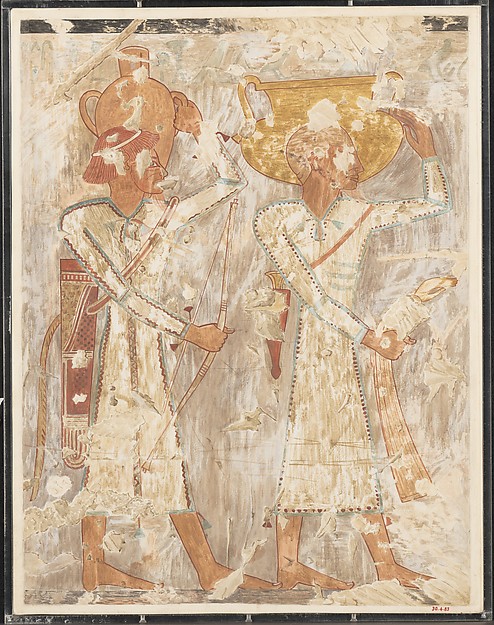
code:http://metmuseum.org/art/collection/search/544618Artist:Nina de Garis Davies (1881–1965)
Period:New Kingdom
Dynasty:Dynasty 18
Reign:reign of Thutmose III–early Amenhotep II
Date:ca. 1479–1425 B.C.
Geography:Original from Egypt, Upper Egypt, Thebes, Sheikh Abd el-Qurna, Tomb of Rekhmire (TT 100)
Medium:Tempera on Paper
Dimensions:facsimile: h. 46 cm (18 1/8 in); w. 35 cm (13 3/4 in) scale 1:1 framed: h. 48.9 cm (19 1/4 in); w. 38.1 cm (15 in)
Credit Line:Rogers Fund, 1930
Accession Number:30.4.83
quote:What's your point?
Originally posted by the lioness,:

A guy with no lips a sharp pointy nose and curly hair.
What are you trying to say here?




quote:
Originally posted by Mike111:
(I got this from Realhistoryww.com the Anatolia section).





quote:.
Originally posted by Ish Gebor:

Syrians Bringing Vessels and Weapons, Tomb of Rekhmire
code:http://metmuseum.org/art/collection/search/544618Artist:Nina de Garis Davies (1881–1965)
Period:New Kingdom
Dynasty:Dynasty 18
Reign:reign of Thutmose III–early Amenhotep II
Date:ca. 1479–1425 B.C.
Geography:Original from Egypt, Upper Egypt, Thebes, Sheikh Abd el-Qurna, Tomb of Rekhmire (TT 100)
Medium:Tempera on Paper
Dimensions:facsimile: h. 46 cm (18 1/8 in); w. 35 cm (13 3/4 in) scale 1:1 framed: h. 48.9 cm (19 1/4 in); w. 38.1 cm (15 in)
Credit Line:Rogers Fund, 1930
Accession Number:30.4.83
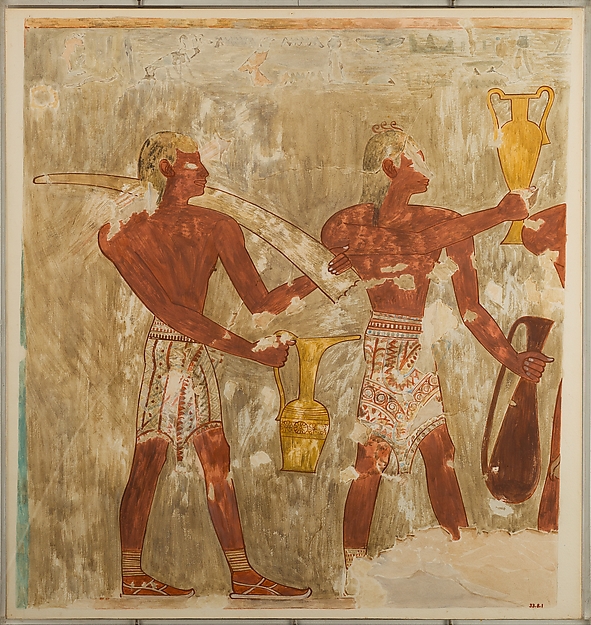
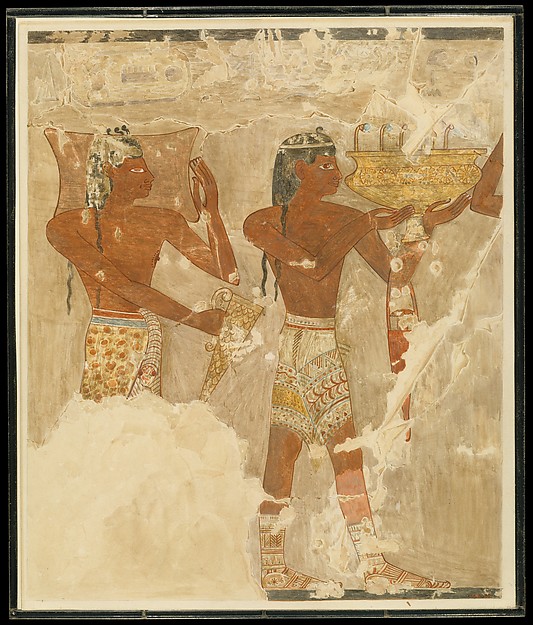
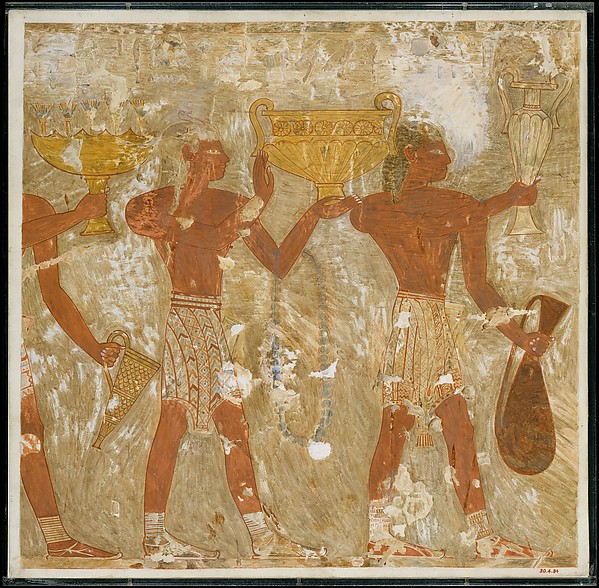
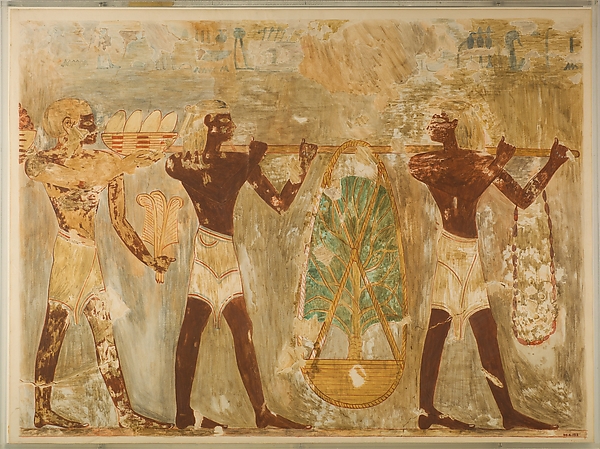
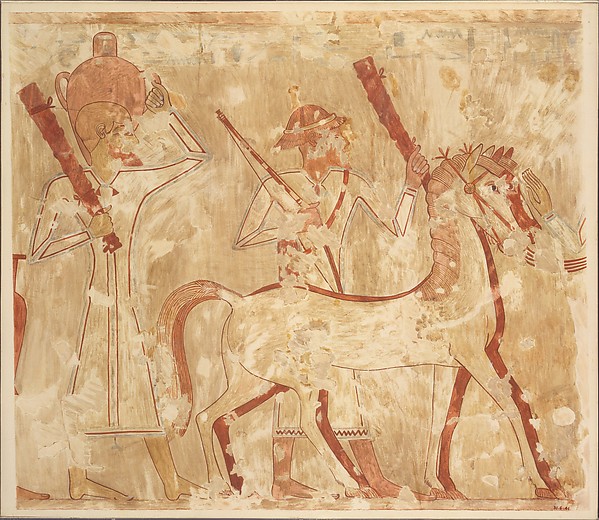
quote:deception and fakeness
Originally posted by Mike111:
(I got this from Realhistoryww.com the Anatolia section).
quote:This thread is about Syrians not Anatolians
Originally posted by Mike111:
Persian relief at Apadana.

quote:This thread is about Syrians not Iraqis
Originally posted by Ish Gebor:
[QB] Bandar Abbas.
quote:Was it not you who posted on ancient Iran in the first place? SMH LOL Where and when did I say anything about Iraq? All I did was show a population likely indignious to Southern Iran, who happen to look similar to ancient people of that region.
Originally posted by the lioness,:
quote:This thread is about Syrians not Anatolians
Originally posted by Mike111:
Persian relief at Apadana.

quote:This thread is about Syrians not Iraqis
Originally posted by Ish Gebor:
[QB] Bandar Abbas.
quote:What is your take on this?
Originally posted by the lioness,:
Clyde said " the white Syrians or Gutians" It's Clyde's fault.
quote:I don't know much about it but if If you read about the history of Syria they don't talk about the Gutians. There is not much known about the Gutians besides that they invaded parts of Sumer
Originally posted by Ish Gebor:
quote:What is your take on this?
Originally posted by the lioness,:
Clyde said " the white Syrians or Gutians" It's Clyde's fault.


quote:--Ahmed, Kozad Mohamed
The period following the fall of the Akkadian Empire is traditionally seen as a period of darkness and anarchy by historians. While the perceived darkness is due to the rarity of Gutian artefacts and text material, the anarchy is an impression formed by the historians gained from the Sumerian and Babylonian historical and literary compositions describing Gutian rule. In fact these compositions were mostly compiled later than the Gutian period itself. Later in this chapter we shall attempt to answer the question whether the Gutian period was really so dark and fruitless, and to interpret the related evidence.
The Gutian Arrival
Some historical allusions in the texts of the Akkadian period indicate that early on there was Gutian infiltration into Mesopotamian lowlands. One of these allusions is to the probable presence of Gutians as soldiers in the Akkadian army.1 The archives of Adab from the Akkadian period mention Gutians who received rations,2 some of them described as ‘travellers’3 and others term residents, that the local governor had to use a Gutian interpreter to communicate with them.
[...]
This acquaintance with Mesopotamian practices as well as other pertinent circumstances helped the Gutians overthrow the Akkadian Dynasty and seize power in the land.
[...]
Whatever the background, the Gutians finally dominated the land of Akkad and “carried off the kingship of Sumer to the mountains/foreign land.”17 This metaphor clearly implies that the fate of the land and its sovereignty passed into the hands of a foreigner, specifically the great Gutian king.18 The Gutians were probably supported by other peoples and groups in the region, perhaps even the Sumerians,19 who looked for liberation from the Akkadian yoke. The neighbouring peoples had together formed an alliance against Narām-Sîn years before, and so it would have been natural to do the same this time. Among the probable allies one may expect the Elamites who were always ready to benefit from any weakness of their western neighbour, the Lullubians, the Hurrians and other mountain peoples and groups who had raided Akkadian territories earlier or who had suffered from campaigns of the kings of Agade.(20) It appears that the Gutians did not (or perhaps they were not able to) spread their hegemony over the whole land of Sumer and Akkad. This is suggested by the presence of the influential Second Lagaš Dynasty and the Uruk Dynasty at the end of the period of Gutian rule. The inscriptions of Ur-Namma refer to at least three independent political entities in Sumer at that period: the Uruk city-state with its ruler Utu‹eg̃al, Lagaš, and the region under the Gutians. There is a suggestion that the two royal names Dudu and Šudurul, mentioned in the SKL as kings of Agade, were in fact rulers of the region centred on the city of Agade (21) during the Gutian rule.


quote:
Originally posted by Mike111:
quote:Are they pre-Turk southeast Anatolian Syrians
Here posted by Mike111 but
Originally posted 03 October 2013 by
Ish Gebor
Syrians Bringing Horses, Tomb of Rekhmire
quote:What is the timing of this?
Originally posted by the lioness,:
" The whites at most consist of the people of Persia, Jibal,
and Khurasan, the Greeks, Slavs, Franks, and Avars, and some few others, not very
numerous"
--Al Jahiz


quote:Ish Gebor - You should not take "ARAB" meaning Turk, Bacterian, Scythian, etc, etc, texts seriously. They are mostly nonsense.
Originally posted by Ish Gebor:
quote:What is the timing of this?
Originally posted by the lioness,:
" The whites at most consist of the people of Persia, Jibal,
and Khurasan, the Greeks, Slavs, Franks, and Avars, and some few others, not very
numerous"
--Al Jahiz

quote:
Coming in peace by the chiefs of Retjenu
and all northern countries of Further Asia




quote:Nowhere did I write any of such. Or made a claim of such. Neither do I understand how you came to that conclusion.
Originally posted by Mike111:
quote:Ish Gebor - You should not take "ARAB" meaning Turk, Bacterian, Scythian, etc, etc, texts seriously. They are mostly nonsense.
Originally posted by Ish Gebor:
quote:What is the timing of this?
Originally posted by the lioness,:
" The whites at most consist of the people of Persia, Jibal,
and Khurasan, the Greeks, Slavs, Franks, and Avars, and some few others, not very
numerous"
--Al Jahiz

But if you are curious, you might try reading these texts.
http://www.realhistoryww.com/world_history/ancient/Misc/Arab_texts/prologue.htm
quote:How does it confirm the tri-color of the Levant? From what I see, it confirms migration into Northeast Africa. Trade or whatever. But does this mean the origin is from the Levant?
Originally posted by Tukuler:
Rekmire's artists confirm the
'tricolour' reality of the Levant
(E Med) with black, white, and
red tribute bearersquote:
Coming in peace by the chiefs of Retjenu
and all northern countries of Further Asia
Bottom register cut offs
[IMG]
quote:What and who are you referring to?
Originally posted by Ish Gebor:
Nowhere did I write any of such. Or made a claim of such.
quote:Black people wearing white clothing is NOT the same as White people.
Originally posted by Tukuler:
Rekmire's artists confirm the
'tricolour' reality of the Levant
(E Med) with black, white, and
red tribute bearers

quote:You of course. You posted to me, correct? I responded to you.
Originally posted by Mike111:
quote:What and who are you referring to?
Originally posted by Ish Gebor:
Nowhere did I write any of such. Or made a claim of such.

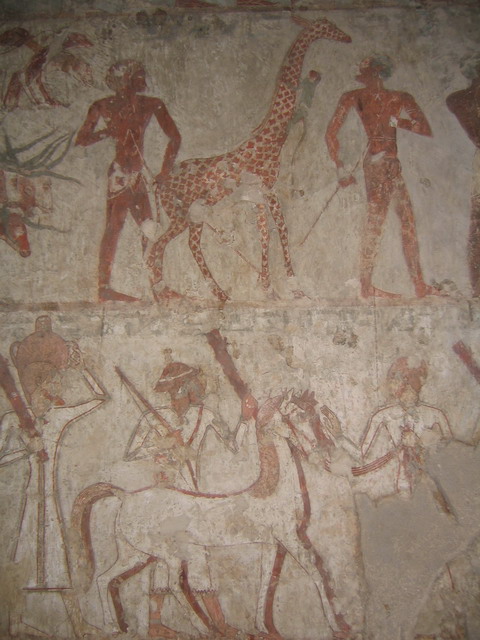

quote:
Originally posted by Ish Gebor:
The light effect makes the image considerable different.
http://northlondonhousewife.com/wp-content/uploads/2015/12/DSC_0587.jpg
http://northlondonhousewife.com/?page_id=542

http://flickrhivemind.net/flickr_hvmnd.cgi?method=GET&page=2&photo_number=50&tag_mode=all&search_type=Tags&originput=rekhmire&sorting=Interestingness&photo_type=250&noform=t&search _domain=Tags&sort=Date%20Posted,%20new%20first&textinput=rekhmire
quote:
Originally posted by zarahan 25 January 2009:
.
As for Egyptian "sayings", here's some things that
were said about "white" Middle Easterners or
Asiatics if we are going to lay the “ethnic” game.
(from Breasted's History of Egypt) History shows
‘whites’ beinge put to slave labor in Egypt, but
Eurocentrics don't usually mention this, although
quick to claim various peoples from the “Middle
East” i.e. Asiatics, as "Caucasoids" when it suits
them. But tey aren't consistent and say that this is
what the Egyptians thought of white people for
example. Its another variant of the "the negro"
methodology. If its Nubian captives Briny rounded
up then its “racial” but if ‘Caucasoids’ from the
Middle East, well, then, that’s different.. Using their
own approach, lets round up Egyptians text on
assorted ‘Caucasoids’:
Subgugation and tribute from in Palestine:
"Tribute of the princes of Retenu, who came to do
obeisance ... to the souls of his majesty... Now every
harbor at which his majesty arrived was supplied with
loaves and with assorted loaves, with oil, incense,
wine, f[ruit] ---- abundant were they beyond
everything ...
Subjugation and tribute from Lebanon:
The chieftains, lord of Lebanon, construct the royal
ships in order that people may sail south in them to
bring all the marvels of the "Garden" to the palace.
LPH. ... The chieftains of Retjenu (Retenu) who drag
the flagpoles by means of oxen to the shore, it is they
who come with their dues to the place where his
majesty is, to the Residence in ...... bearing all the
fine products brought as marvels of the south and
being taxed for tribute annually as (with) all
bondsmen of his Majesty."
Operations against Asiatic 'Troglodytes':
"Then my Majesty made them take their oaths of
allegiance as follows: never again shall we do
anything evil against Menkheperre (another name for
Thutmose III), may he live forever ...
Then my Majesty had them set free on the road to
their cities*). They went off on donkeys for I had
seized their chariotry. I captured their inhabitants for
Egypt and their property likewise." [W. Helck transl.
by B. Cummings (1982), `Urkunden der 18.
Dynastie', `Egyptian Historical Records of the Later
18th Dynasty']
"His majesty proceeded northward, to overthrow the
Asiatics (Mntyw-Stt). His majesty arrived at a
district, Sekmem (Skmm) was its name. His majesty
led the good way in proceeding to the palace of `Life,
Prosperity, and Health (L.P.H.,' when Sekmen had
fallen, together with Retenu (Rtnw) the wretched,
while I was acting as rearguard." [Breasted,
`Records', Vol. I, Sec. 680]
Time of Seti the Great - Presentation of Syrian
Prisoners and Precious Vessels to Amon
"Smiting the Troglodytes, beating down the Asiatics
(Mn·t·yw), making his boundary as far as the `Horns
of the Earth', as far as the marshes of Naharin
(N-h-r-n)." [Ibid., Vol. III, Sec. 118;]
"Slaying of the Asiatic Troglodytes (Ynw-Mn·t·yw
[Menate, Manasseh]), all inaccessible countries, all
lands, the Fenkhu of the marshes of Asia, the Great
Bend of the sea (w'd-wr)."
Subjugation and tribute from Assur/Assyria area
"The tribute of the chief of Assur (Ys-sw-r): genuine
lapis lazuli, a large block, making 20 deben, 9 kidet;
genuine lapis lazuli, 2 blocks; total, 3; and pieces,
[making] 30 deben; total, 50 deben and 9 kidet; fine
lapis lazuli from Babylon (Bb-r); vessels of Assur of
hrrt- stone in colors, ---- very many." "Tribute of the
chief of Assur: horses ---. A ---- of skin of the M-h-w
as the [protection] of a chariot, of the finest of ---
wood; 190(+x) wagons --- --- wood, nhb wood, 343
pieces, carob wood, 50 pieces; nby and k'nk wood,
206 pieces; olive oil, ------.." [BREASTED, Vol. II,
Sec. 446, 449]
"Whites" put to slave labor in Egypt, but
Eurocentrics don't usually mention this, although
quick to claim the Middle Eastern Asiatics as
"Caucasoids" on other occassions
from Project Guttenberg full text of:
A HISTORY OF EGYPT FROM THE EARLIEST
TIMES TO THE PERSIAN CONQUEST
BY JAMES HENRY BREASTED,
II, 760-1, 773. 2 II, 761.
Inscription
"the Asiatics of all countries came with bowed head,
doing obeisance to the fame of his majesty."
book text:
"Thutmose's war-galleys moored in the harbour of
the town; but at this time not merely the iceaUh of
Asia was unloaded from the ships; the Asiatics
themselves, bound one to another in long lines, were
led down the gang planks to begin a life of slave-
labour for the Pharaoh (Fig. 119). They wore long
matted beards, an abomination to the Egyptians ;
their hair hung in heavy black masses upon their
shoulders, and they were clad in gaily coloured
woolen stuffs, such as the Egyptian, spotless in his
white linen robe, would never put on his body.
Their arms were pinioned behind them at the elbows
or crossed over their heads and lashed together ; or,
again, their hands were thrust through odd pointed
ovals of wood, which
served as hand-cuffs. The women carried their
children slung in a fold of the mantle over their
shoulders. With their strange speech and uncouth
postures the poor wretches were the subject of jibe
and merriment on the part of the multitude ; while the
artists of the time could never forbear caricaturing
them. Many of them found their way into the houses
of the Pharaoh's favourites, and his generals were
liberally rewarded with gifts of such slaves; but the
larger
number were immediately employed on the temple
estates, the Pharaoh's domains, or in the construction
of his great monuments and buildings." [/QB]